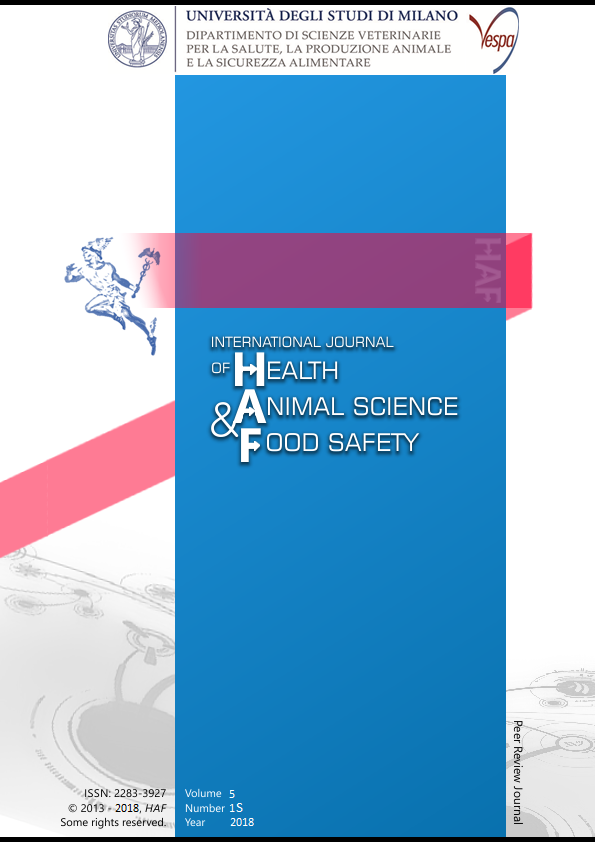Abstract
Following the concepts of precision feeding, the right components balance (Sova et al., 2014) and the correct particle size distribution (PSD, Khan et al., 2014) of total mixed ration (TMR) are essential for a complete homogeneity of the diet and are strongly influenced by adopted mixing time (MT, Humer et al., 2018, Schingoethe et al.,2017). The aim of the trial was to determine the influence of two MTs (MT1≤7min and MT2>7min) on the chemical homogeneity and PSD along the feeding alley. Diets were performed with a horizontal cutter-mixer wagon (Gulliver 4016, Sgariboldi), and TMR samples were collected from the beginning, middle and end of the feeding alley after discharge. Triplicate samples of the diet were collected for chemical composition analyses (moisture, CP, Ash, EE, NDF and ADF) and PSD evaluation (Heinrichs and Kononoff, 2002) over two months (two sampling/week). Statistical analysis was performed by a PROC MIXED for repeated measurements of SAS. MT1 evidenced a non-uniform distribution of moisture content along the feeding alley (P=0.05): lower moisture was found at the end than at the beginning and in the middle (47.55 vs 51.13 and 51.00%, respectively; P<0.01). No significant effects of MTs were recorded for other chemical parameters. The PSD showed trend to a higher retained amount of fibre in MT1 upper sieve (14.79 vs. 10.14%; P=0.06), while lower amount of feed was found in middle and bottom sieve than MT2 (38.9 and 12.81 vs 42.17 and 14.32%, respectively; P=0.08 and P=0.06). With respect to TMR distribution along the feeding alley, no differences were found between MT1 and MT2. Day of sampling evidenced significant variation both in chemical and physical composition (P<0.05). Obtained preliminary data evidenced the influence of MTs on composition and on PSD of the provided diet; results suggest to daily measure moisture of raw material in order to avoid negative changes in dry matter intake.
Riferimenti bibliografici
Heinrichs J. and Kononoff P. 2002. Evaluating particle size of forages and TMRs using the new Penn State Forage Particle Separator. Pennsylvania State University, College of Agricultural Sciences, Cooperative Extension DAS, 02-42.
Humer E., Petri R. M., Aschenbach J. R., Bradford B. J., Penner G. B., Tafaj M., Südekum K.H and Zebeli Q. 2018. Invited review: Practical feeding management recommendations to mitigate the risk of subacute ruminal acidosis in dairy cattle. Journal of dairy science. 101(2), 872-888.
Khan M. A., Bach A., Castells L., Weary D. M. and von Keyserlingk M. A. G. 2014. Effects of particle size and moisture levels in mixed rations on the feeding behavior of dairy heifers. Animal. 8(10), 1722-1727.
Schingoethe, D. J. 2017. A 100-Year Review: Total mixed ration feeding of dairy cows. Journal of dairy science. 100(12), 10143-10150.
Sova A. D., LeBlanc S. J., McBride B. W. and DeVries T. J. 2014. Accuracy and precision of total mixed rations fed on commercial dairy farms. Journal of dairy science. 97, 562–571.
This work is licensed under a CC BY-SA 4.0 international

